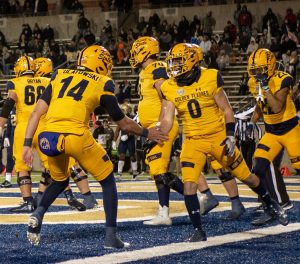College of Arts and Sciences spreads violence awareness
October 14, 2016
In the two-night event, “Seeing the Disappeared,” Kent State students learned about documenting violence and how forensic anthropologists and biologists seem to solve the unsolvable.
According to James Tyner, interim director of the Institute for the Study and Prevention of Violence, this event is the second in its kind, intended to foster awareness about violence and how forensic anthropologists document violence.
The first event, hosted by the College of Arts and Sciences last spring, focused on the aftermath of the Cambodian genocide during the Khmer Rouge rule.
“We want to showcase different types of violence, and different ways of documenting violence,” Tyner said.
He said he intends to host a forum about violence every semester to keep the conversation about violence going.
“I hope to both facilitate collaborative relationships with other academics, but also to provide insight to students and the community about violence related issues,” Tyner said.
The event began Tuesday with speakers Catherine Nolin, a University of Northern British Columbia geographer, and James Rodriguez, a photographer who documented the uncovering of mass graves in post war Guatemala.
On Wednesday, the conversation was centered around teaching students how forensic professionals use their skills to identify missing persons.
Zoren Budimlija, a forensic pathologist with the University of Pennsylvania Medical System, told students about his work identifying victims in New York City on 9/11.
“It was a huge honor and a huge challenge,” Budimlija said. “It really pushed my career into forensic anthropology instead of just forensic pathology.”
Budimlija also works with the International Commission on Missing Persons in Sarajevo, Bosnia and Herzegovina. He told students to take advantage of all the resources Kent State has to offer.
“The diversity you have here is life changing,” Budimlija said. “The more people limit themselves, the more people become poorer and poorer. Talk to others around campus. Reach out internationally.”
Anthony Tosi, a professor of evolution and molecular forensics, spoke about his experience solving homicides in New York City.
Originally interested in evolutionary biology, Tosi decided he wanted to expand his horizons and learn more about forensic anthropology.
“There’s the same techniques in forensic anthropology and evolutionary biology,” Tosi said. “We just answer different questions.”
Tosi has since joined an exclusive group of forensic analysts who are able to bring their work with them in the courtroom.
“There are 20 to 30 people nationwide who are trained to not only do forensic analysis but to also interpret it and present it in the court of law,” Tosi said.
The College of Arts and Sciences is in the process of developing a new forensic anthropology minor, and Tosi is one of the faculty members working on it.
“Some universities have these programs, but not many have trial experience like the professors here have,” Tosi said. “We’ve been there. We’ve done case work.”
Taylor Ireland, a freshman middle childhood education major, said she attended the event for a class assignment, but also said she was glad she came.
“I learned a lot of things I didn’t know,” Ireland said. “There’s much more here than just a 500 word paper.”
For more information on this event or the forensic anthropology minor, check out the College of Arts and Sciences at www.kent.edu/cas
Contact Emma Keating at [email protected].













